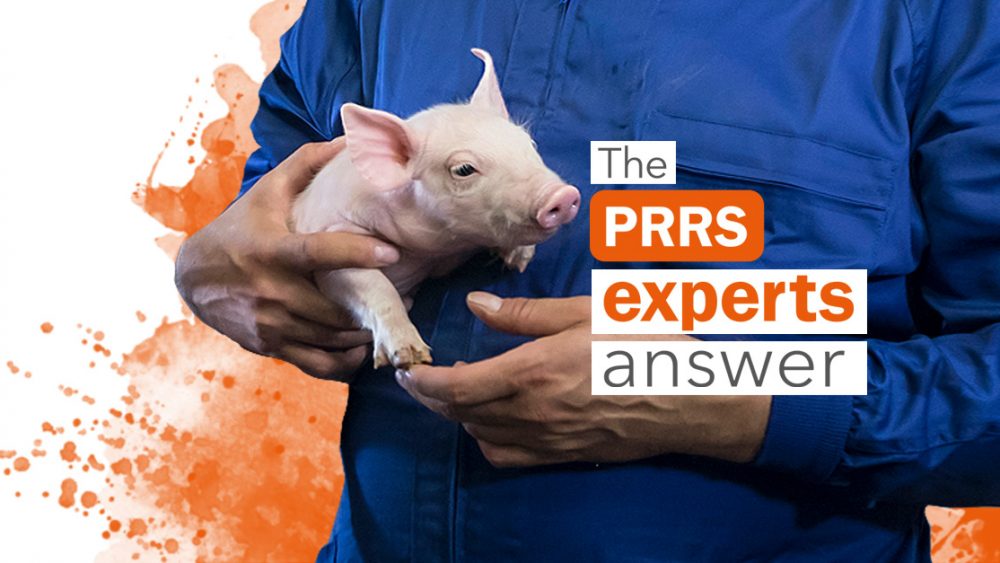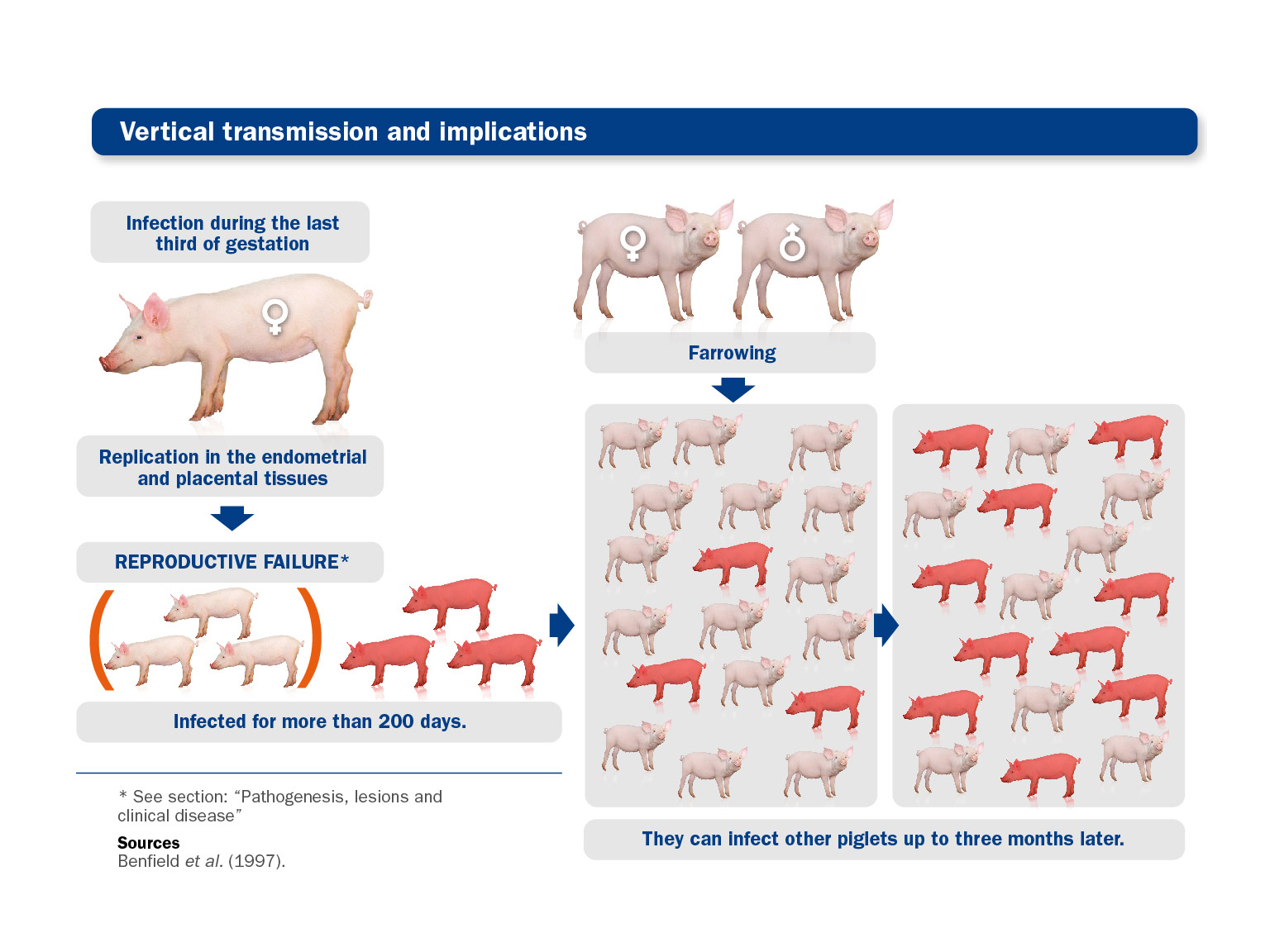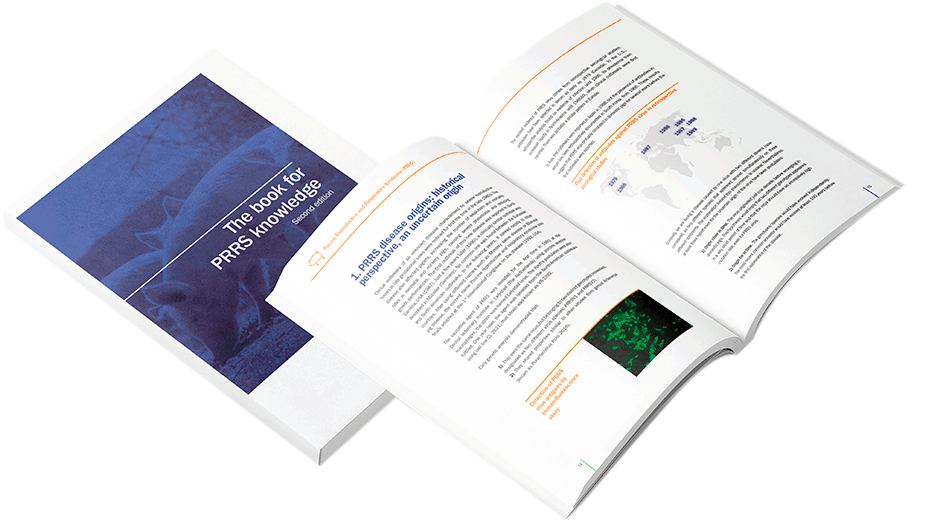Could abortion or stillborn happen in sows less than three weeks before farrowing if they are given a PRRSv MLV vaccine? And what can be the consequences of vaccinating for PRRSv during late pregnancy (2-3 weeks before farrowing)? Because when blanket vaccination is applied in the farm, it sometimes falls three to two weeks before farrowing in some sows.
To answer this question, a previous explanation of the pathogenesis of PRRSv-induced abortion is required.
PRRSv vertical Transmission
Abortion in PRRSv infection happens as a result of fetal infection (mainly) and damage to the placenta. The virus reaches the placenta during the viremic phase of the infection.
To cross the placenta and to reach the fetuses it is needed that susceptible macrophages are present in there.
Fig 1. PRRSv vertical transmission and its implications.
Susceptible macrophages are not significantly present until the late gestation (around 80-90 days of gestation) and therefore, the PRRS virus is thought not being able to cross the placenta at least until day 86.
Usually the PRRSv infects one of the fetuses in one uterine horn spreading afterwards fetus-to-fetus.
Abortion happens on average between 10-14 days from the onset of the infection. This explains why abortions are usually seen around day 100-105 or later.
What happens when PRRS vaccination is performed during late pregnancy?
If you are using a MLV PRRSv vaccine in late gestation in previously vaccinated sows, the vaccine virus will reach the placenta and will infect the fetuses.
In most cases, this will result in the birth of apparently healthy but viremic piglets that will perform normally.
However, if sows have little PRRSv previous immunity or none, reproductive disorders may happen although of lesser intensity than with field virus infection.
For this reason, some farms performing PRRSv blanket vaccination leave late gestation sows apart and vaccinate them after farrowing.
This may help to avoid the mentioned effect but also creates a serious disturbance in the organization of the farm.
Also, the effects of handling or restraining sows in very late gestation need to be considered, particularly if the staff is not trained enough.
If you want to know more about to the PRRS virus and its vertical transmission visit Chapter No. 2, “Tranmission within herds” of this site
You can ask your own question! Visit Pig333.com and submit your question to the experts.

Centre for Research on Animal Health (CReSA), Barcelona University (UAB) – Spain





